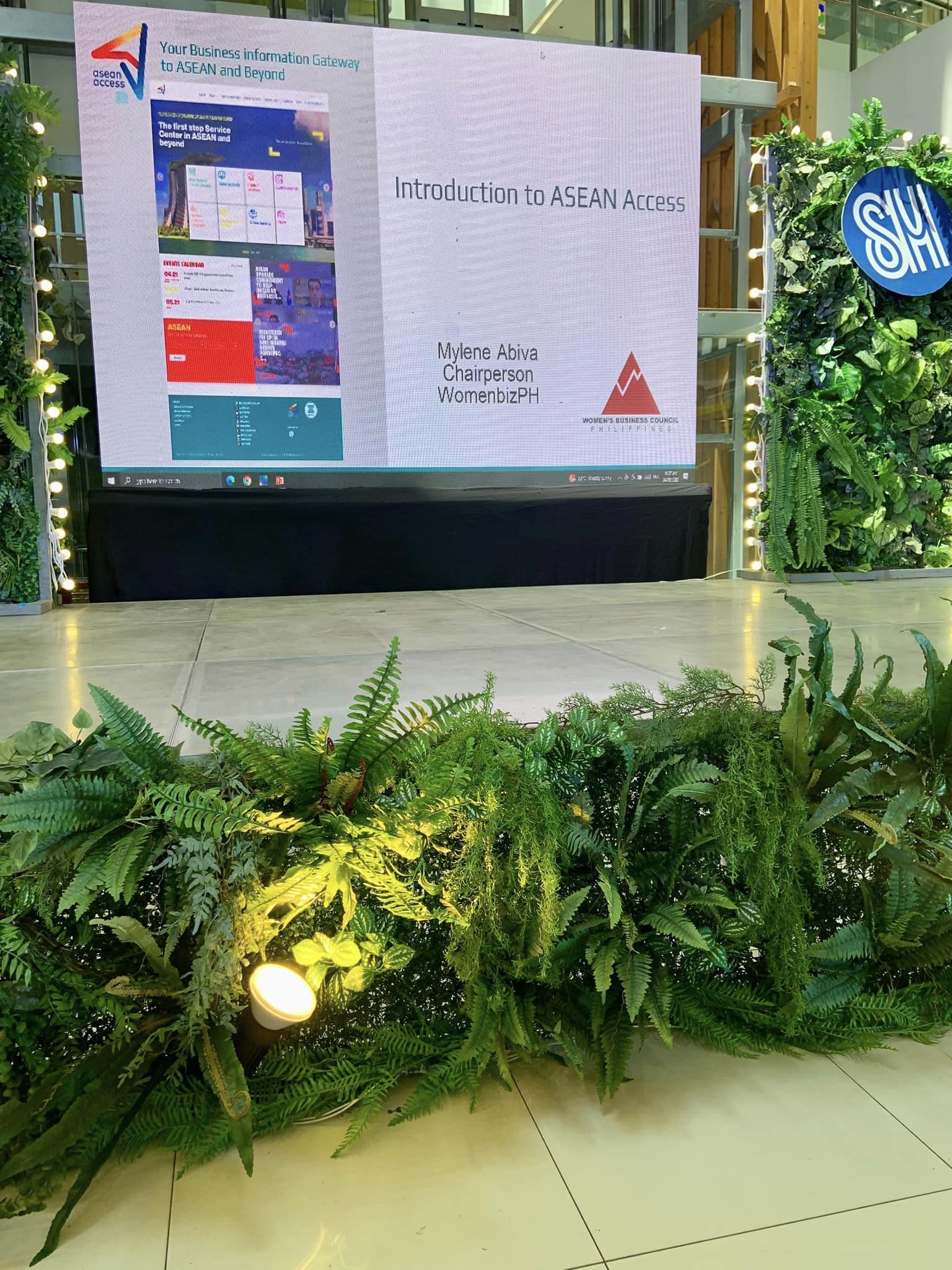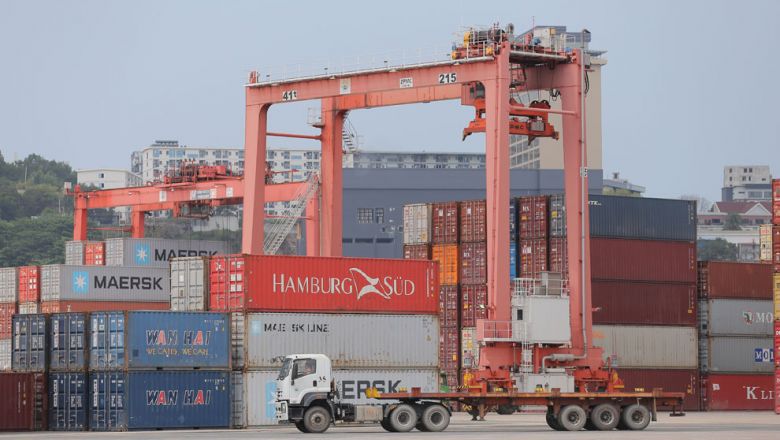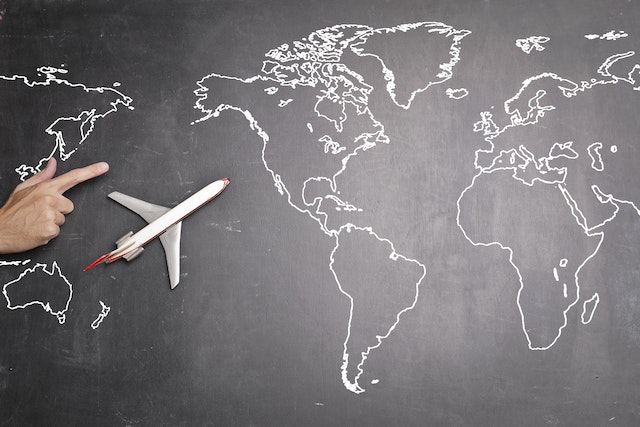The 9th annual EU-ASEAN Business Sentiment Survey (BSS) revealed a positive outlook for European businesses in Southeast Asia (SEA), underscoring growing importance of ASEAN-European Union (EU) relations.
The survey is a vital barometer to gauge European business outlook on key issues including macroeconomic conditions, policy and regulatory environment in Southeast Asia, and the development of bilateral and plurilateral free trade agreements in the region.
The findings from this year’s survey, which had nearly 600 responses from the European private sector, indicate an overall optimistic outlook for ASEAN.
Some 80 per cent of respondents believe that ASEAN markets will become more important in terms of worldwide revenues over the next two years, highlighting the region’s growing significance in the global economy, a 15 per cent jump from 2022.
Eighty-four per cent of respondents expressed their intention to boost levels of trade and investment in ASEAN, a seven per cent increase from 2022. Meanwhile, 65 per cent of respondents anticipate an increase in profits in ASEAN for 2023, showing a continued positive trend in the region’s business landscape. This percentage remains robust despite a slight decrease from last year’s figure of 69 per cent.
The survey also revealed that around two thirds of respondents view ASEAN as the region for best economic opportunities over the next five years, reflecting a consistent perspective compared to the previous year.
Source: Borneo Bulletin
Read the full article here
While it has strong infrastructure, Brunei scored 51 per cent in the recently released Pulse Internet Resilience Index (IRI) of the Internet Society, ranking third of 11 countries along with Malaysia and Thailand in the Southeast Asian region. It scored behind Singapore with 72 per cent, Vietnam with 52 per cent and Malaysia and Thailand with 51 per cent.
The Sultanate scored well in mobile network (with 72 per cent) and connectivity (with 71 per cent). The regional average is 49 per cent, higher than Asia with 46 per cent, Americas and Oceania with 45 per cent each, and Africa with 35 per cent, but below Europe’s 60 per cent.
Described as a first-of-its-kind tool, the IRI offers insights into the Internet resilience of 170 countries. It is based on four key metrics: infrastructure, performance, security and market readiness.
Internet Society, a non-profit Internet watchdog, tracks resilience across key metrics including infrastructure, performance, security, and market readiness through its Pulse Platform.
“Internet resilience means maintaining an acceptable level of service and connection despite faults and challenges to normal operation. This focus has been increasing among policymakers and activists worldwide as Internet infrastructure becomes essential for a nation’s economy and society,” the Internet Society said in a statement recently.
For performance, the Sultanate scored 65 per cent and 46 per cent for security. Security measures the ability of the network to resist intentional or unintentional disruptions through the adoption of security technologies and best practices, while market readiness is the ability of the market to self-regulate and provide affordable prices to end-users by maintaining a diverse and competitive market.
The infrastructure score is based on the existence and availability of physical infrastructure that provides Internet connectivity, while performance is the ability of the network to provide end-users with seamless and reliable access to Internet services.
Source: Borneo Bulletin
Read the full article here
In the first quarter (Q1) of 2023, the Sultanate’s gross domestic product (GDP) at constant prices recorded a year-on-year increase of 0.8 per cent, according to a Department of Economic Planning and Statistics (JPES) report.
The year-on-year increase was attributed to an increase in the non-oil and gas sector by 6.2 per cent. Meanwhile, the oil and gas sector fell by five per cent.
The increase in the sector was driven by the rise in subsectors such as air transport by 285.1 per cent, followed by finance (71.7) and other transport services (33.1).
The increase in the finance subsector was in line with an increase in the income of banking activities. Meanwhile, the increase in the air transport and the other transport services was driven by an increase in passenger air arrivals and departures, corresponding to the full lifting of travel measures.
The manufacture of petroleum and chemical products subsector under non-oil and gas sector experienced a decline due a decrease in the production of petrochemicals as a result of maintenance activities.
Source: Borneo Bulletin
Read the full article here
Authorities in Laos and Thailand have discussed a feasibility plan to construct an expressway from Savannakhet Province to the nearby Vietnamese border, linking Northeastern Thailand with the country.
Savannaket Deputy Governor Senesak Soulysak proposed a feasibility plan for the expressway spanning 160 kilometers from the capital city of Savanakhet to the Lao Bao Border Check Point with Vietnam to the Thai former Minister of Energy and Mines, Sonthirat Sonthijirawong, alongside other Thai officials.
Along with the expressway, the Deputy Governor said that investment in the construction of five-star hotels and golf courses, international transportation services, etc. would foster more development in the province which has already seen increased foreign investment in the renewable energy sector.
According to provincial authorities, the expressway would boost economic trading as the province is located in the East-West Economic Corridor.
Among 21 counties, Thailand is the second-largest foreign investor in Savannakhet after China in 2023.
In April 2022, The Ministry of Planning and Investment discontinued work by contracted developers on the expressway projects of the Vang Vieng-Luang Prabang Expressway and Luang Prabang-Oudomxay Expressway due to multiple delays.
The country has also undertaken feasibility studies to build Vientiane to Houaphanh Expressway and the expressway from Houaphanh Province to the border with Vietnam in 2022.
By Manyphone Vongphachanh
Source: Laotian Times
In a significant move to bolster their respective railway sectors and enhance regional trade within the Pan-Asian railway initiative, the Lao National Railway Enterprise (LNRE) and Keretapi Tanah Melayu Bhd (KTMB) have signed a memorandum of cooperation this month.
Under the terms of the agreement, Laos will open its rail network to KTMB trains, enabling them to operate within its borders. In reciprocity, LNRE trains will also gain access to the Malaysian rail network. In this regard, both parties have committed to strictly adhere to international technical standards for railway operations.
This collaboration signifies a notable stride for Laos as it asserts itself as a pivotal player in the Pan-Asian Rail network, following the nearly two-year successful operations of the Laos-China Railway—a 409-kilometer link connecting Vientiane Capital in Laos to Kunming in China.
By leveraging the high-speed railway, Laos is positioning itself as a vital logistics hub for Southeast Asia, particularly in trade with China. With escalating costs associated with sea and freight transportation, KTMB’s Executive Officer, Mohammad Rani, informed that a rail journey to China takes merely eight days compared to the 14 to 21 days required for sea transport, resulting in significant cost savings.
The Vientiane line is a crucial link in this network that offers three key routes: the central route linking Kunming, Laos, and Bangkok; the western route extending through Myanmar and Thailand; and the eastern route traversing Vietnam, Cambodia, and Thailand before converging in Bangkok and extending southwards towards Malaysia and Singapore. These options will forge fresh trade opportunities in Southeast Asia, ultimately driving down logistics costs as regional countries prioritize their infrastructure development.
The Pan-Asian Railway is a network of railways that connects Kunming, Singapore, and all the countries of mainland Southeast Asia. The Pan-Asia rail network is also part of the much more ambitious Trans-Asian Rail network, which plans to facilitate trade and travel between Europe and Asia.
By Jonathan Meadley
Source: Laotian Times
Source: KhmerTimes
Source: The Phnom Penh Post
The digital economy contributed 2.1 billion baht to Thailand's gross domestic product (GDP) in 2022, marking a 1.9% increase from the 2.04 billion baht the previous year.
Putchapong Nodthaisong, secretary-general of the Office of the National Digital Economy and Society Commission (ONDE-Thailand), said this week that Thailand's digital economy GDP in 2022 grew by 3.49% compared to the 4.44 billion baht the previous year. This growth was the result of the improving situation following the pandemic, leading the overall economy to return to a state of normalcy and resulting in the expansion of the digital economy.
As part of the “Digital Contribution to GDP” project to measure economic growth through the analysis of digital technology-induced aggregate product within the country, a framework was established to measure the value of the digital economy. This was done using the GDP measurement methodology of the country, focusing on production, income, and expenditure. The outcomes provide preliminary data for ONDE to understand the overall landscape of the country's digital economic activities, thereby providing tools for studying, analysing and monitoring the situation, as well as assessing the impacts of transitioning to digital technology. These results will also aid in formulating future policies and strategies for the development of the country's digital economy.
Putchapong added that the true expansion rates of the digital economy for 2021 and 2022 were 11.83% and 1.90%, respectively. When comparing the proportions between the digital economy value and the GDP at current prices, it was revealed that the percentages were 12.66% and 12.19% for 2021 and 2022, respectively.
This demonstrates that the government needs to implement policies to further stimulate the digital economy in order to achieve the goal of reaching a 30% contribution by 2027, as outlined in the 13th National Economic and Social Development Plan.
Source : THE NATION THAILAND
THE soaring cost of business travel is projected to climb even higher this year and in 2024 as relentless post-pandemic competition for airline seats, hotel rooms and hire cars drives up prices.
While the steep increases of 2022 will moderate, there’s no sign the cost of work trips will stop rising, according to a report on Thursday (Aug 10) from travel company CWT and the Global Business Travel Association (GBTA). Prices that have shocked travellers and defied most forecasts since Covid restrictions eased are now normal, the report said.
Typical premium-class airline tickets are expected to top US$4,500 next year. “We could now be looking at the true new cost of travel,” CWT chief executive officer Patrick Andersen said.
The report paints a mixed picture for companies around the world, from multinational corporations to small family-owned businesses, that rely on travel to meet clients, drum up revenue, or connect with employees. On the one hand, the savage hikes of last year are over. But inflation, interest rates and splurging vacationers are still driving up the cost of out-of-office trips.
Average business travel airfares across all cabin classes – by far the biggest single component of travel for work – will rise 2.3 per cent this year and 1.8 per cent next year to US$780, the report said. The single-digit increases follow a jump of 72 per cent in 2022, when travel demand exploded. Even larger price jumps are forecast for hotel rooms and car rentals for staff on the road.
Airlines have failed to get stored planes back in the air to meet demand as fast they would have liked. They’ve also struggled to recruit enough cabin crew and pilots, and wait times for the most popular new jets from Boeing and Airbus are years-long. All these factors exacerbate a capacity shortage that continues to push up fares.
“Demand is outrunning capacity growth,” Willie Walsh, director general of the International Air Transport Association (Iata), said this week.
Passenger traffic has reached 94 per cent of pre-Covid levels, according to Iata. The northern hemisphere’s summer travel season kicked off in June with double-digit jumps in demand and planes were typically more than 84 per cent full, said the association, which is the airline’s industry’s main lobby group.
To be sure, the corporate travel recovery isn’t materialising as fast as some airlines expected.
Deutsche Lufthansa, Europe’s biggest airline group, has recovered only about 60 per cent of pre-Covid business volumes, and is targeting 70 per cent by year-end. British Airways is seeing similar trends and Air France-KLM doesn’t expect the French domestic market to ever fully recover. In the US, a full rebound in business travel is being waylaid by economic concerns, according to estimates from the US Travel Association.
That doesn’t mean business-travel costs are going to come down, said Richard Johnson, the global head of CWT Solutions Group, the company’s consulting division.
The grip on prices now enjoyed by travel providers “is not something they’re going to relinquish lightly”, UK-based Johnson said in an interview. “And why would they? 2019 is no longer really representative as a baseline.”
Even if companies approve fewer business trips, the value of face-to-face meetings is incontestable, he said. The scope of corporate travel programmes may be reined in, but rising costs means travel budgets themselves can’t be reduced, he said.
Multi-destination business trips, an emerging practice known as trip batching, are up 10 per cent from pre-pandemic levels, according to the report. Such trips help reduce emissions, save money and maximise employee travel time, it said.
The report from CWT and the GBTA was based on information from more than 70 million ticketed flights, over 125 million hotel bookings and more than 30 million car hires covering data from 2018 to the present.
Source: The Business Times
Link: Here
The exponential birth of financial technology (fintech) companies has grown overwhelmingly in the past decade. Yet, many had short lives, failing to clear the true technological hurdles of the financial industry.
The plot for fintechs was becoming too familiar that global fintech funding saw a slump last year. In a report by S&P Global Market Intelligence, funding for fintech firms fell to US$63b.
In the final quarter of 2022, only 599 rounds worth US$8b were recorded. This was 4.5 times less than 2021’s US$26b (1,000 rounds).
S&P Global said 2022 was challenging for the macro environment, which likely influenced the sentiments of venture capitalists (VC) and startups.
Venture capitalists might find interest in transitioning towards less populated economies worldwide, particularly in areas where conventional financial systems are scarce or underdeveloped.
These investors provide capital to young companies that are often in the early stages of development and have not yet reached a point where they can access traditional forms of funding, such as bank loans or public offerings.
In these regions, fintech models like payment orchestration, cross-border payments, sweep networks, and revenue financing could present alluring opportunities for VCs.
Moreover, middleware players involved in the embedded finance sector might also be seen as secure and promising investments in such contexts.
Does the potential outweigh the risks?
In 2022, Asia Pacific (APAC) saw its fintech funding fall 19% with a recorded US$5.68b investment, S&P Global reported.
However, this global phenomenon does not dampen the spirits of those persevering.
Similarly, results from a survey showed that fintech partnerships are essential for APAC banks and other financial institutions (FI).
Finastra research, in partnership with East & Partners in Singapore, showed that 87% of these entities believe in allyship with fintechs. Optimists are keen on connecting with an average of four fintechs within the year or so.
Among the reasons why banks and financial entities are absorbing these technologies include reducing operational costs, integrating modern technology, and pumping up their existing in-house systems.
Veena Rao, head of corporate lending at Finastra, told Asian Banking and Finance that banks and FIs are experiencing a technological gap in meeting the needs of their customers.
“The pace at which banks can develop, launch and adopt new technology-enabled products in-house is not fast enough to fulfil changing customer expectations. Partnering with fintechs with the right expertise to innovate with FIs will enable FIs to orchestrate their digitization efforts across different functions at scale and with speed,” Rao said.
In the 18 months prior to April this year, over half of APAC respondents (54%) have digitised their customer-facing processes, slightly surpassing the global average of 47% and ranking second after Europe (73%).
Notably, a higher percentage of APAC respondents (26%) feel they are ahead in their digital journey compared to the global average (19%), but a similar proportion in APAC (34%) and globally (33%) believe they are more than a year behind.
Similarly, in S&P Global’s report “Global fintech funding primed for reset in 2023,” Southeast Asia — particularly Singapore, Indonesia, Malaysia, Thailand and the Philippines — has “emerged” as the fourth most identified hub for fintech venture capitalists.
Grass isn’t greener on the other side
“FIs could do more to bolster their customer data security and privacy infrastructure – an area where fintechs could play in too,” Rao said.
She added that the further reliance of customers on digital services has lured ill-intended entities to enable cyberattacks, leading to the downside of fintechs.
“Recent examples include the ransomware attack on Indonesia’s central bank in January 2022 and the data breach at the Reserve Bank of New Zealand. Data breaches, loose privacy infrastructure and poor risk management frameworks can lead to direct monetary losses, reputation damage and declining credit profiles for FIs,” Rao said.
Yet, this cyber landscape is so vast that other markets deal with layers of snags.
Mainland China and Australia have the largest number of publicly traded fintechs in the APAC region, with China’s fintech sector experiencing regulatory challenges.
S&P Global’s Sampath Sharma Nariyanuri, associate research analyst, said that China’s performance has been noticeable.
“In China, payment growth rates are actually slowing down and just like in other mature markets. And a lot of fintechs in China have also been around for more than a decade now. But that's where some of the similarities that China shares with the mature markets probably end,“ Nariyanuri said in a webinar.
“Another point is that there has also been a venture capital squeeze in China for some time now, which has somewhat curtailed the supply of private fintechs. But China does have a number of fintechs that are really waiting for the opportune time to go public and I'll talk more about them in a subsequent slide,” he added.
However, the tailwinds for APAC fintechs include the potential rebound of fintechs in China, the rise of real-time payments, and the progress of fintechs toward profitability.
“So we expect, going forward, 2023 to be a muted year unless we see really mega funding grounds involving billions of dollars from large private fintechs, especially from China where companies have been very quiet,” Nariyanuri added.
Despite minimal action seen from the mainland, its effect is minimal to the overall growth on a year-on-year basis.
Source: Asian Business Review
Link: Here
Southeast Asia’s fragmented market poses a challenge for a single firm or platform to create a unified payment option. For example, in Southeast Asia, the Philippines and Indonesia are lagging in terms of cashless payments.
Achint Setia, chief revenue and marketing officer at ZALORA, said they saw a significant reduction in transactions from cash on delivery in the last two years. But he noticed some gaps in the payment landscape of the Philippines and Indonesia in Southeast Asia compared to Singapore and Malaysia.
ZALORA data showed that Filipino cash transactions in 2021, returned to 2019 levels. World Bank’s 2021 data revealed that Indonesia has the world’s fourth-largest unbanked population.
Top e-commerce platforms, ZALORA, Tokopedia, and Amazon, suggested incentivising and ensuring trust from customers to address the different payment demands in Southeast Asia.
Return/Refund Policy
A first incentive is to ensure that the customer will be confident that they will get refunds, said Setia.
In the Philippines, ZALORA provides a clear set of guidelines to allow customers to understand the return/exchange policies.
There are also articles and guidelines posted on the website to help consumers address specific concerns.
Sujit Misra, Amazon APAC’s director of payments, said consumers demand more action to secure their purchases online. Misra said it is important to create authenticity verification mechanisms, provide reliable customer service, and enforce strict processes for sellers.
By doing these, it would reduce bad actors attempting to sell fake products on e-commerce. Amazon said it blocked 800,000 attempts to create new selling accounts, which reduced fake sellers on its platform. It marks a drop from 2.5 million attempts in 2021 and 6 million attempts in 2020.
“Offering safe payment options to customers is critical to a great customer experience, so we do everything we can to offer our customers and sellers a choice when it comes to how to pay in Amazon stores,” Misra said when interviewed recently by the Singapore Business Review.
BNPL inclusion
Vira Widiyasari, senior vice president of fintech and payment firm Tokopedia, said buy now, pay later (BNPL) options are a game changer in the payment landscape and help streamline the process.
“In the past, consumers had to visit a physical bank branch to apply for a loan when they wanted to make any substantial purchases, but today, services such as BNPL are now more readily accessible for anyone with a smartphone or device through their daily activities such as shopping on e-commerce,” said Widiyasari in a separate interview by Retail Asia.
One example of a BNPL option is Tokopedia’s GoPayLater Cicil, which was introduced in collaboration with GoTo Financial to provide users with affordable options when purchasing items whilst not having available funds. GoPayLater Cicil users can split lump sum payments for Tokopedia purchases into monthly installments over one, three, six to twelve months, with no hidden fees.
In Indonesia, Widiyasari handphones and tablets, women’s fashion, computers, and laptops, automotive, and electronics were some of the most popular categories in the first quarter of 2023 using BNPL payment options.
ZALORA Philippines also tapped Plentina’s BNPL option, which loans up to P5,000 (US$90) in ZALORA e-vouchers to load their wallets. In a statement, the app surpassed the 200,000 mark for the number of downloads.
Although struggling, the Philippines and Indonesia are still improving in cashless services. A 2021 Visa study revealed that 84% of Filipinos have tried going cashless in 2021, and Financial Services Authority data showed Indonesia’s financial inclusion index rose to 85.10% in 2022 from 76.19% in 2019.
Instant Pay
The third payment method that will relieve customers from payment issues is instant fund transfer. An example of this, Amazon shared, is PayNow, a real-time payment method launched by the Association of Banks in Singapore.
It is available to retail customers of nine participating banks and three participating non-financial institutions that cover over 95% of banked customers in Singapore.
Digital investment
The last incentive is to provide investment opportunities for customers. In Tokopedia, Tokopedia Emas (E-gold) and Tokopedia Reksa Dana (Mutual Funds) provide a seamless and integrated digital experience for Indonesians to become investors for the first time.
These products can improve accessibility and affordability by enabling Indonesians to buy mutual funds and e-gold starting from IDR10.000 and IDR5.000 respectively.
In Indonesia, Tokopedia found that there was a 1.5 times increase in the value of gold buying and selling transactions through Tokopedia Emas, whilst the number of users investing in gold increased two-fold, compared to 2021.
Customers as kings
In conclusion, Setia said businesses will continue to solve pain points and change spending behavior as “customers continue to be treated as kings.”
For example, BNPL will continue to gain traction amongst customers. This, in turn, will push e-commerce players to create a seamless way to move from the BNPL partner platform to their platform.
Setia also raised concerns about how businesses can address issues in payment systems such as processing-related errors.
“How we can solve some of these journeys with tech and take away that hassle from the customers’ mind is where a lot of effort is going right now,” he said.
Source: Asian Business Review
Link: Here
























